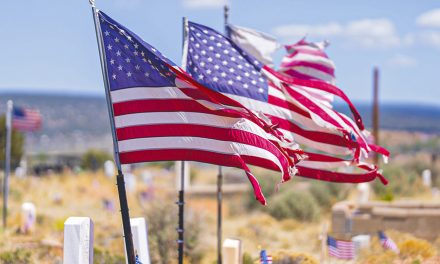
Plan or build? NHA, Council disagree
WINDOW ROCK
Acting Navajo Housing Authority CEO Dwayne Waseta sees the expected infusion of housing funds from the American Rescue Plan Act as an opportunity to do some much-needed long-term planning in coordination with other tribal entities.
But the Navajo Nation Council’s Nabik’iyat’i Committee wants to see houses go up on the Navajo Nation, and took last Tuesday’s work session on housing as an opportunity to blast NHA for everything from firing CEO Frank Dayish to hoarding federal dollars.
Delegates also asked why the NHA Board of Commissioners wasn’t on the conference call. The answer to that is that BOC Chairwoman Derrith Watchman-Moore and former commissioner Frankie Lee were at the Navajo Times office at the time, telling the Times they are tired of what Lee called the “Roman circus of bloodletting” that seems to occur every time the commissioners come before Council.
As the largest tribally designated housing entity in the country, NHA could be in for the lion’s share of the $450 million set aside by ARPA for tribal housing across the country.
In his report, Waseta told the assembled delegates he’d like to see the NHA work with NTUA, the Indian Health Service (which has funding for bathroom additions and water lines), the Division of Community Development and the Navajo Engineering and Construction Authority on a shared database and GIS map of broadband connections, water lines, electrical lines, sewer projects, population and ideal building sites, in order to come up with a comprehensive housing plan for the Navajo Nation.
In the immediate future, he said, some 32 development sites have been identified, but without a thorough knowledge of the infrastructure needs, it doesn’t make sense to plunge in and start erecting buildings.
“If you start building and it’s going to cost a million dollars to run a one-mile water line, you pretty quickly go over HUD’s cost limit on building homes,” he explained.
He cited a planned project in Cornfields where NHA had platted 15 homes but NTUA says the infrastructure will only support 10.
At the Times office, Watchman-Moore recalled the ill-fated tribal employee apartments on a hill behind the Window Rock Post Office. Ground had already been broken for the project when NTUA informed NHA that it would be cost-prohibitive to run water to the site.
Many existing NHA developments, she added, are built on flood plains, something NHA would obviously like to avoid in the future.
The Council delegates weren’t having it.
“The Nation’s still at a standstill of ever building homes,” declared Delegate Kee Allen Begay. “We reduced the board from eight to five commissioners. As of today I believe nothing has changed. I’m talking on behalf of my five chapters (Tachee/Blue Gap, Many Farms, Nazlini, Tselani/Cottonwood and Low Mountain.)
“There’s got to be a way that we can make emergency legislation to resolve this,” he added. “Otherwise it (ARPA) is going to come and go with no houses being built again.”
“People are living in sheds now,” agreed Delegate Otto Tso. “We have to find a way to overcome the bureaucracy. We need to lobby Congress to loosen up some of these policies.”
Tso and other delegates complained the federal poverty level is too low, edging out some working poor who don’t qualify for subsidized housing.
Delegate Nathaniel Brown agreed, saying, “I’ve heard people say, ‘I’m not going to work because I want an NHA home.’”
Brown and others wondered, not for the first time, if it’s time for the Council to abolish NHA and take over as the tribally designated housing entity — in other words, the recipient of the federal housing grants.
Watchman-Moore and Lee say that’s not the answer.
“If you want to kill NHA,” said Lee, “you will have to create another organization exactly like NHA. They’re going to have to learn from scratch.”
Tso asked Waseta how many homes NHA is planning to build with the ARPA funds, but Waseta pointed out that they don’t even know how much the tribe is going to get or what the restrictions on the funds will be. That’s why it makes sense to work on a prioritized plan now.
One thing’s for sure, Tso said, there is a time limit on the funds (December of 2025), and “if we don’t spend those dollars, Congress is going to want them back.”
Several delegates said they would like a follow-up meeting with the NHA board after the ARPA work sessions are over.
As a public service, the Navajo Times is making all coverage of the coronavirus pandemic fully available on its website. Please support the Times by subscribing.
How to protect yourself and others.
Why masks work. Which masks are best.
Resources for coronavirus assistance








 Highway 264,
Highway 264, I-40, WB @ Winslow
I-40, WB @ Winslow